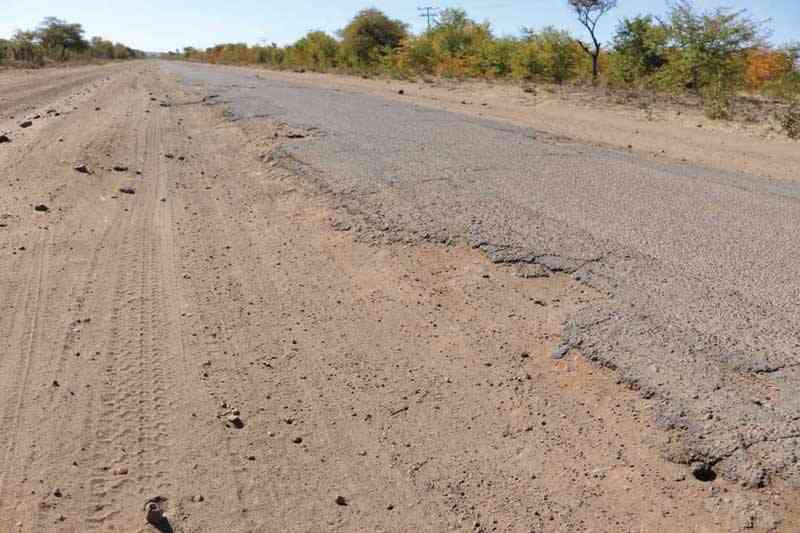
Government says it is running out of storage space for its ivory stockpiles and indications are that by December this year, the Zimbabwe Parks and Wildlife Management Authority (Zimparks) will have to create more space for the “white gold”.
View Point with Wisdom Mdzungairi
The ivory is obtained from various sources including problem animal control, natural deaths and breakages, confiscation, poaching or otherwise.
There are chances Zimbabwe could start lobbying to relax a ban on international trade in rhino horn to allow a one-off sale of stockpiles to address a poaching bloodbath.
Clearly, ivory poaching is back, big time, and the Internet is awash with photos of bloodied tusks and elephant carcasses.
According to Zimparks spokesperson Caroline Washaya-Moyo, the wildlife authority can only accommodate 65 tonnes of ivory, yet currently, it is sitting on over 62,374 tonnes valued at approximately $15,6 million.
What is disturbing is that Zimparks collects on average 1 100 tonnes of elephant tusks per month — itself a huge figure by any standard. This speaks either to the ballooning number of the jumbo population in the country or increased poaching within our borders. Yes, Zimbabwe’s moratorium to resume ivory trading ends in 2016. So how much ivory will be in the Central Stores by that time.?
Where this ivory is stored is a closely-guarded secret. With a black market price of almost $3 000 a kilogram, I am sure the wildlife authorities are taking no chances.
- Chamisa under fire over US$120K donation
- Mavhunga puts DeMbare into Chibuku quarterfinals
- Pension funds bet on Cabora Bassa oilfields
- Councils defy govt fire tender directive
Keep Reading
An inescapable fact is that tens of tonnes of gleaming tusks are recovered annually from elephants that die of natural causes in Zimbabwe’s parks and reserves, and elsewhere. Not surprisingly, countries that are doing a good job of managing their elephant populations argue that they should be able to benefit from the sale of guilt-free tusks to raise badly needed funds for the conservation of the giants.
South Africa last week also indicated that it would submit a proposal “to introduce regulated international trade in rhino horn” at the next meeting of the wildlife trade regulator Cites in South Africa in 2016. What is worse for the neighbouring country is that it is seeking permission for a one-off sale of some of its $1 billion stockpile of rhino horn to finance conservation and potentially flood a thriving black market.
Both Zimbabwe and South Africa agree that they cannot continue to be held hostage by the syndicates who are slaughtering the countries’ most prized wildlife — elephants and rhinos. These countries have the ability to make this scarce resource somewhat available without impacting on the species, through the implementation of a regulated trade system.
Traffic, the joint WWF/IUCN wildlife trade monitoring network, says there is no hard evidence that these sales lead to more poaching or increased illegal trade in ivory.
Enforcement issues and potential ivory sales are sure to dominate the next Cites conference at which Zimbabwe and South Africa are expected to submit proposals to sell their ivory stockpiles, and set off alarmist media coverage.
No doubt what is happening to elephants and their ivory is far more complex than the picture painted by most protectionist groups, which focus almost exclusively on elephant killings, giving the impression that these great creatures are being killed all over the continent.
The truth is that ivory poaching is most widespread in African states saddled with civil wars and racked by humanitarian crises, riddled by corruption and lacking effective conservation — of which DRC and Mali are all-too-ghastly examples.
By contrast, elephant numbers are increasing in the stable countries of southern Africa — Zimbabwe, Botswana, Zambia and South Africa, among others — where anti-poaching efforts have had some effect. Zimbabwe has over 100 000 elephants, while Botswana has 130 000.
Yet, conservation groups fear the plan by South Africa, and Zimbabwe could end up increasing demand in major markets such as Vietnam, where both the rhino and elephant horn is sought after for use in traditional medicine, as well as enriching black marketeers.
Through almost all of human history, elephants have been regarded as mere bearers of treasure — now we find them far more important than the ivory they carry. That is why the ivory ban came into being 20 years ago, and why the international community will never return to a completely unregulated ivory trade.
However, if the ban’s limitations are not addressed, its provisions strengthened and new ideas incorporated, perhaps we will end up facing another decade of poaching, ivory trafficking and elephant killings.
The size of ivory stockpiles in many countries in and outside Africa, and their possible contribution to the illegal ivory supply chain, remains an important gap in the current understanding of the dynamics of the illegal ivory trade.
This gap could be substantially narrowed through mandatory, regular inventorying. Forensic techniques may help to establish the extent to which ivory in illegal trade is derived from poaching or was leaked from official stockpiles. In the meantime, seized ivory should be sold so that the money could be used to protect the African elephant.











